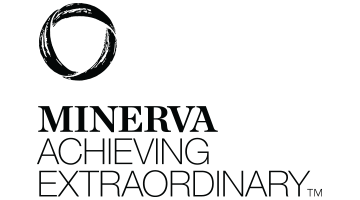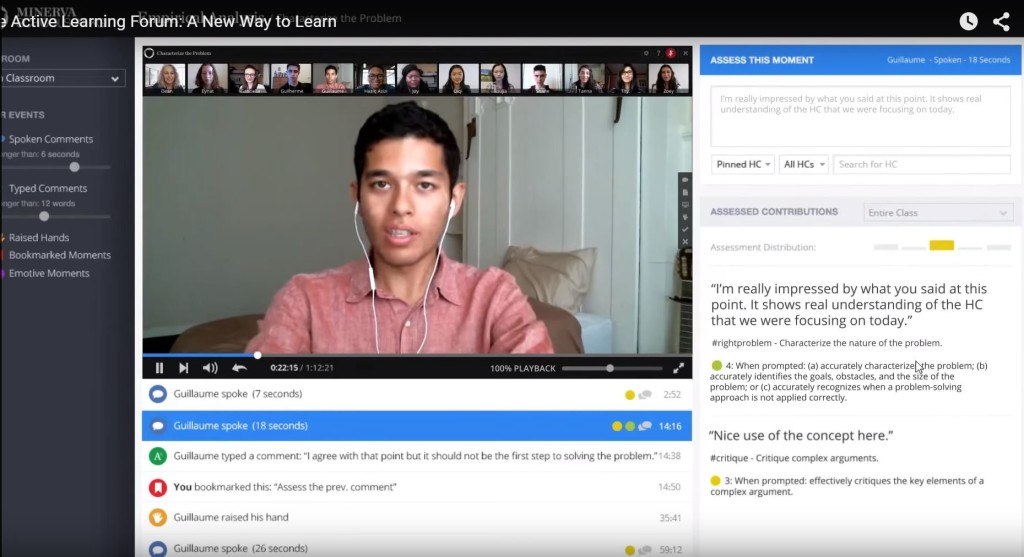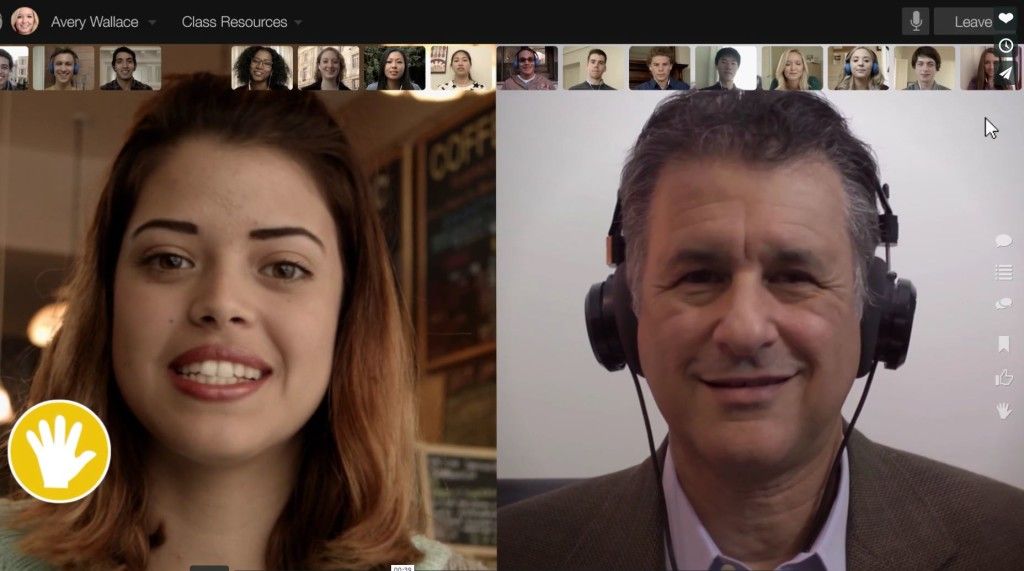Scribes vs. technology: How Minerva would run HBS

At HBS, scribes sit in on many classes to record student comments. What if this data can be automatically captured and captured in real-time with software? Welcome to Minerva.
At HBS, we are used to the sight of a scribe sitting at the back of our classes, meticulously recording what students each said during class. After the class ends, professors would then review transcripts to assign participation grades to students for their comments, which usually makes up half of the overall grade for the course. Professors can also assess which students have not spoken enough, which parts of the classroom they tend to call on more often, and make a data-driven effort to make class participation more even across the classroom.
The Minerva Project does this and more, automating data tracking and analysis with technology. Minerva is a new university and a tech startup, leveraging technology to reimagine higher education. Classes at Minerva are conducted online, using the platform developed in-house called the Active Learning Forum. Like an HBS classroom, the classes are highly driven by students actively participating, but the software takes care of recording video snippets of what each student said during class. After the class ends, professors can view the list of snippets of students speaking, filter by snippets longer than, say, 10 seconds, and grade students while rewatching what they said. However, there is more: students can also view snippets of when they spoke as well as view the professor’s grade and comments on each one of their comments, closing a tight feedback loop to help them make better comments next time.

Also similar to HBS, the software can tell which students have been more active participants in class discussions than others and encourage the professor to call on those students. However, the software can deliver this analysis in real-time, as the class progresses. During class, professors can turn on a filter to color each student’s icon from green to red based on how much they have spoken in that class, where green denotes that they have not spoken very much, while as they cumulatively make enough comments during a single class, their icon will slowly be filled with a red bar. If a professor wants to randomly call a student, akin to the dreaded “cold call” at HBS, the algorithm can randomly choose a student that have not yet spoken enough to even out the participation.

Besides being lower cost, more scalable, and more powerful than scribes, Minerva’s software platform and the data it collects also enable their value capture strategy.
Minerva’s broader vision is to reimagine higher education. Higher education institutions in America are defined by their rank in the variety of published rankings, such as the US News and World Report. The rankings take into account of factors such as acceptance rate, enrollment rate, faculty’s research output, and prestige of athletic programs. However, many of these factors are not necessarily linked to the quality of education the institution delivers, but higher education does not have a better way to assess quality — until now.
As Minerva does not have the reputation of having graduated centuries or decades of students to substantiate their rankings, for them to establish the efficacy of their pedagogical model, they would need to establish and gain acceptance for a new way to measure their impact. The data gathered by their software is their means to do so. First, Minerva’s pedagogy set out to teach skills over content, so they defined these skills — critical thinking, creativity, communications, and interpersonal effectiveness — in great detail. Then, unlike traditional university courses in which students get one, static grade at the end of the semester, at Minerva students get constantly evaluated as the semester progresses, with each comment they make in class and each assignment they work on. Instead of getting a single grade, an A or a B, at Minerva students get assessed on each of their skill dimensions; their transcript is a profile of their skills and it is a living document that tracks their progress throughout their four years at Minerva. By pointing to this historical trend of skill development supported by many data points gathered in a variety of settings along the way, Minerva can substantiate the impact of their education on their students and hopefully support the conclusion that, despite being the new kid on the block, they offer a quality of education that rivals, or perhaps even surpasses, that of the long-standing Ivy League institutions. If so, then it would be hard to imagine that parents would not eschew the flawed rankings and clamor to evaluate the traditional universities in the same way.
Minerva shows the promise of using technology to capture data and conduct analytics to revolutionize even the oldest, most steadfast institutions.



I find this incredibly interesting, because it would actually be quite logical for HBS to switch to this model over using scribes. Technology for voice recognition has substantially improved over the past few years. Switching to this method may enable even greater accuracy and faster reporting. Additionally, it would be beneficial for students to have greater transparency in how their participation is tracking. Access to data is the key to transparency.
Great post Chang! I love that this system ensures equitable participation from all students, thereby enhancing student engagement and bringing people to the same level, at least in terms of quantity of participation, also eliminating the “teacher’s favorite” problem! It is also great for students who are able to get real time feedback and do not have to wait until mid semester to see how they really perform. The technology is far from eliminating people but enhances their abilities and makes the product better.
I agree with Jennifer that HBS should totally switch to this model over using scribes. But I’m not sure I understand how Minerva is able to provide better rankings for critical thinking, creativity, communications, and interpersonal effectiveness. My understanding is that Minerva just provides the tools for recording and a platform for teachers to more easily grade their students and call effectively in class. But how does this translate to ranking/comparing effectiveness across schools? Because Minerva is not actually doing the actual grading across institutions, and I’m still not sure how it shows how student at institution A compares to institution B on creativity and critical thinking. Also, although skills are an important part of university education, knowledge and exposure to new ideas is also a critical part of studies, and I’m not sure how their platform facilitates transfer of those aspects of higher education.
To your questions:
1) You’re right that rankings will not be cross-school. They’re hoping it’ll happen like this: once their students graduate and go on to do wonderful things and their pedagogy becomes recognized, then their method of grading would gain credence
2) The other part about Minerva’s pedagogy is that while their freshman year curriculum is focused on skills, their curriculum later teaches content using the foundation of skills
Does that make sense?